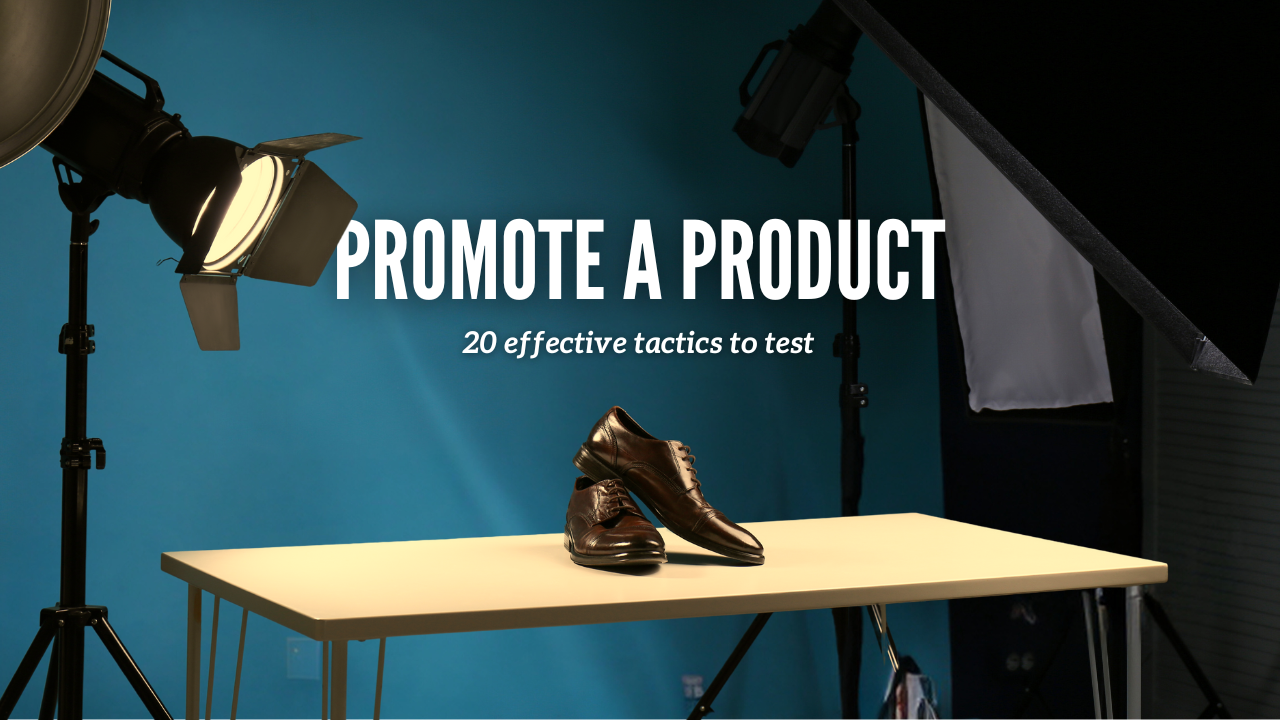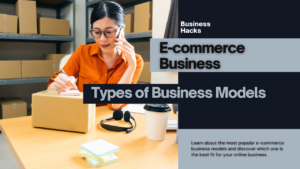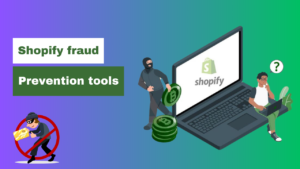
Whether you’ve just launched your online store or you already have a well-established e-commerce operation, promoting your products is essential for sustaining your business.
To assist you in getting started or revamping your efforts, we’ve compiled in this article 20 action-oriented ideas and marketing channels to try out in order to promote the products available in your store.
Promotion of Products: Definition
Product promotion involves elucidating its value to the customer base to stimulate purchases. It’s a form of advertising and a marketing strategy aimed at influencing buying behavior and increasing sales. Product promotion also encompasses discounts, trial offers, and contests.
How to Promote a Product: 20 Creative Ideas to Try
Draw inspiration from these tactics, experiment with the ones that appear most promising to you, and refine your strategy based on your results. Are you ready? Let’s get started!
- Feature your products in gift guides
- Engage in email marketing
- Implement an affiliate program
- Establish partnerships with media outlets
- Collaborate with related brands
- Expand your presence on Pinterest
- Utilize advanced features on Facebook
- Advertise (Search & Display)
- Offer samples
- Optimize your store for search engines
- Sell on marketplaces
- Focus on referral programs
- Partner with influencers
- Provide a unique shopping experience through Live Shopping
- Create blog articles
- Leverage Instagram
- Share videos on YouTube
- Host a contest
- Open a pop-up store
- Utilize User-Generated Content (UGC) for marketing purposes
1. Reference your products in gift guides
Gift guides present an excellent opportunity to introduce your products to consumers who are open to new ideas. Often, when people struggle for gift ideas—be it for birthdays, births, or holidays—their first instinct, like that of most internet users, is to search for inspiration on search engines and consult gift idea guides.
So, why not include your own product in these gift guides? There are guides for every niche, occasion, and target audience. Take note of the guides appearing on the first few pages of search results and reach out to the publishers to see if you could be included. These guides could become a significant source of traffic for your online store.
Keep in mind that you’ll need to provide a compelling reason for your product to be referenced. The guide’s author or publisher should feel that adding your product will enrich their publication. Ensure you highlight the strengths of what you offer.
Some guides might request payment for including your product or a link to your store, or they might ask for an affiliate link. Be prepared for this investment, as it will also enhance your natural referencing.
2. Utilize email marketing
Email is one of the most effective customer acquisition channels. While other channels, like SEO, require time to generate traffic, email marketing can yield immediate results.
Leverage email marketing to promote your e-commerce site. Rather than spending all your time writing and sending emails, simplify things by setting up a series of automated email campaigns designed to increase your revenue. Some possibilities include:
Sending an email campaign aimed at encouraging new subscribers to take advantage of an enticing offer. Sending an email campaign introducing additional products to customers who have just made their first purchase and thanking them for their support. Sending an email campaign to recover abandoned carts and encourage prospects to complete their orders.
3. Implement an affiliate program
If you struggle to make sales and lack sufficient marketing budget, consider offering an affiliate program on your online store. Affiliate marketing programs enable third-party sellers to promote your product in exchange for a commission. You only pay them if they make a sale.
As part of your affiliate program, create a custom URL for each seller promoting your products. These partners might share their link on social media, in a blog post reviewing your product, or even in a YouTube video featuring your item. Through these personalized links, you can track the sales they generate and pay them their commissions.
Note that you’ll need to provide some training to your affiliates for effective promotion. Remember: since affiliates are attempting to sell your products on your behalf, you can consider them as your dedicated marketing team. Failing to provide them with a list of best practices will make their task more challenging, forcing them to improvise.
Recommended reading: Why invest in affiliate marketing?
4. Forge partnerships with the media
Good media coverage can help you reach new customers and allow more people to discover your product. Well-known journalists are inundated with press releases and collaboration requests. Maximize your chances by targeting regional daily press, online magazines, and niche blogs instead.
Instead of sending press releases to magazine editors, send them a personalized email asking if they’d be willing to receive a sample. Target different publications in your niche and magazines focused on product curation.
5. Collaborate with related brands
Collaborations, or “collabs,” have gained immense popularity in recent years. This type of collaboration can be extremely beneficial for brands partnering together: creating an event, generating excitement with a limited collection, sharing production costs, and pooling audiences.
If you’re interested in this type of operation, start by identifying brands or influencers that share your values, target the same audience, or offer complementary products/services to yours.
6. Expand your presence on Pinterest Rich Pins
Pinterest is a platform that lends itself particularly well to online product sales. Not surprisingly, users utilize Pinterest to create wish lists or discover products and solutions to enhance their daily lives. Among the search trends on the platform, you’ll find travel (van life, camping), home and wellness (spa, DIY), food (cooking recipes), and fashion. These reasons make it an excellent place to promote your products.
Pinterest pins also have the advantage of having a long lifespan. It’s not uncommon for pins to be viewed months after their publication. Adopt a strategic approach by posting your pins during peak traffic times, choosing relevant keywords, and using captivating images. To increase the visibility of your posts, you can use enriched product pins. This sponsored pin format allows you to display real-time information about your item’s price, availability, and where it can be purchased.
You could even organize contests on the platform to expand your reach.
7. Leverage advanced features on Facebook
Billions of people use Facebook, and as an advertising platform, Facebook provides advanced targeting options for paid advertisements. Specifically, it’s possible to effectively promote an online product through Facebook’s Custom Audiences feature.
This feature allows you to display your ads to visitors of your website and subscribers by email when they’re logged into their Facebook account. These ads tend to perform very well because you know precisely whom you’re targeting, and you can customize your ads accordingly.
You can further optimize your marketing on Facebook by adding a Shop section to your Facebook page. This feature makes it easier for users to discover your offers.
Your Facebook shop will redirect users to your website where they can complete their purchase.
If you’re a Shopify merchant, you can set up the creation of your Facebook shop directly within Shopify. This way, users and fans can learn more about your products, view your images, and purchase your items once they’re redirected to your website.
8. Advertise (Search & Display)
When starting out, many brands turn to advertising to quickly increase their visibility and acquire their first customers. As mentioned earlier, online advertising offers numerous targeting options and advanced performance tracking tools to optimize your ads. The choice of format and marketing channel will depend on your goals and target audience.
For example, you can run visual ads (Display) on social platforms like YouTube or Facebook to gain exposure. Simultaneously, you can also launch a campaign on major search engines (Search) to target users actively seeking a solution. Whether you’re broadcasting your ads on the Search or Display network, consider designing landing pages.
9. Offer samples
Allowing customers to try your product is one of the oldest and most effective sales techniques. It’s used in all sectors: food and beverages, cosmetics, automotive, or services (offering a free trial period, for example).
Samples or free trial offers offer three advantages:
- Collecting personal information to send commercial emails later
- More easily converting a prospect into a customer, as they are attracted by the free offer and convinced to purchase a product or brand they didn’t know
- Demonstrating the credibility of your product/brand.
- Offering samples is unfortunately not suitable for all types of products and can represent a significant investment for a young company. If this applies to you, consider an alternative such as free returns for 30 days, for example.
10. Optimize your store for search engines
Even though it requires patience, organic search provides one of the few opportunities to create a sustainable source of qualified traffic.
Creating an effective SEO strategy involves several steps, including developing relevant content strategy, keyword research and analysis, optimizing site architecture and performance (e.g., creating category pages, increasing loading speed), and building a quality backlink profile. While the work involved is extensive and requires patience before seeing the first results, search engine optimization is an essential acquisition strategy. You might be surprised by the results once your site is optimized.
If you’ve already established a basic SEO strategy and want to take things to the next level, we recommend consulting the following resource: What is SEO marketing? Find out why and how to improve your online SEO
11. Sell on marketplaces
Today, marketplaces have become essential in the buying journey of online consumers. Whether they are generalists like Amazon and Cdiscount or specialized, marketplaces benefit from huge visibility and notoriety among online consumers.
Selling your products on these marketplaces means promoting and selling your products where your future customers are. To start selling your products on marketplaces, identify one or a handful of popular products on your store, which offer a sufficiently high margin to support marketplace costs.
Further read: Do market research in 5 steps
12. Focus on referral marketing
Referral marketing, also known as word-of-mouth marketing, is one of the oldest marketing techniques. The goal of referral marketing is to encourage people, especially your customers, to talk about your product to increase brand awareness and drive sales.
These days, you can rely on the web to amplify the effectiveness of referral marketing. Besides allowing you to reach more people, the web also makes it easier for people to share your content and track the impact generated.
13. Collaborate with influencers
It’s difficult to promote a product when launching a new business without already having built an audience. In this case, you either have to pay to generate traffic or rely on other people’s audiences until you build your own community.
By partnering with influencers, you can maximize the appeal of your product and reach potential customers more easily. You have nothing to lose by asking well-known influencers to feature your product. If they have an engaged audience and are open to partnerships, you could generate a lot of traffic and sales.
14. Offer a unique shopping experience with Live Shopping Reddit Advertising

E-commerce offers many advantages to consumers and merchants, but everyone agrees that it suffers from a lack of personal interaction. To overcome this “impersonal” aspect and improve your customers’ shopping experience, consider trying live shopping. Live shopping is a new trend, originating from Asia, that involves organizing live videos to showcase your products or answer your subscribers’ questions.
If you don’t feel like a home shopping network presenter, you can still offer an enhanced shopping experience to visitors on your site by using instant messaging or by offering personalized video appointments.
15. Write blog articles
Content marketing, sometimes called blogging, is an excellent way to promote your online store. With the right approach, blogging can be an effective way to generate traffic and associate a theme with your products. The results of a study conducted by HubSpot have shown that it’s possible to increase your traffic by publishing more blog articles.
Use your blog to generate traffic and promote your products. When done correctly, blogging helps generate traffic from search engines, attract customers, and capture the attention of media and renowned bloggers who might decide to write about you.
Recommended reading: E-commerce blogging: What is a Blog? Definition, Types of Blogs and Benefits Explained
16. Harness the power of Instagram
The Instagram network boasts more than 500 million daily active users (22 million in France), and its focus on photo sharing makes it an ideal platform for promoting products, especially since the introduction of Instagram Shopping features. Half of these users log into Instagram every day. Any brand could increase the appeal of its products by establishing a presence and even selling on Instagram.
There are several ways to use Instagram to promote an e-commerce store. You could share captivating photos of your products, a stop-motion video showcasing one of your products in action, organize a contest, or contact influential Instagram accounts to propose featuring your product in a sponsored post.
Recommended reading: How to get 10,000 Instagram followers – 10 essential tips
17. Share your videos on YouTube
YouTube, as a platform, is also one of the most used search engines to find new content. Furthermore, YouTube videos can also appear in the results of regular search engines like Google. This represents a huge traffic opportunity.
There’s no need to create a viral video to get results on YouTube. You can effectively promote your products through informative or interesting videos. Several consumers might already be searching for your products or brand on YouTube. By creating a professional channel that hosts your own videos, you can control the narrative.
Recommended reading: Everything you need to know about free video editing software + 19 tools to test in 2024
18. Host a contest
Contests serve as an effective means to reach a broad audience and enhance your brand’s visibility. By offering your product as a contest prize, you ensure the attraction of qualified participants—meaning potential prospects.
However, numerous contests fail. There are specific mistakes to avoid when organizing a contest aimed at promoting your brand. Ensure that the platform, timing, message, and steps to participate in the contest are well thought out.
19. Launch a Pop-up Store
Even if you operate an online business, you can reap the benefits of physical sales without opening a permanent store. Take advantage of promoting your e-commerce website in person by selling your product in the physical world through a temporary pop-up store. There are certainly unused spaces in your city that you could rent for a week—or even a weekend—to open a pop-up shop.
By opening a pop-up store, you can exclusively showcase some of your products, attract attention from the local press, leverage the excitement of intense shopping periods, and engage with customers in person to better understand them.
20. Harness User-Generated Content (UGC)
Your customers are and will always be the best advocates for your product, especially when they are satisfied. Internet users are particularly receptive to reviews and experiences shared by consumers. Therefore, it’s in your best interest to encourage your customers to share their experiences on social media and post photos or videos like an unboxing. To achieve this, you might consider routinely inserting a message in your packages, regularly sharing your subscribers’ posts on your social profiles, or displaying customer posts on your product pages.
However, always ensure to request and obtain permission from the authors of the photos or videos before reusing them in your publications. In most cases, your customers will accept and feel honored to be contacted and highlighted by your brand.
Start Promoting Your Product
Products don’t sell themselves. That’s why you should adopt a proactive approach and test the ideas from this list that seem most promising to begin selling your product today.





